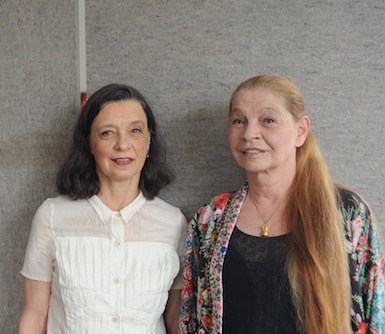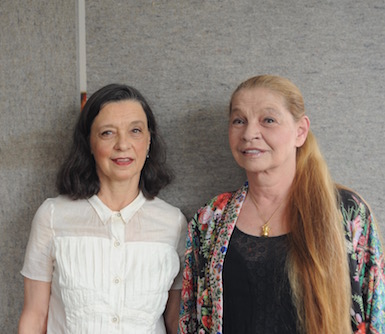[ad_1]

Rebecca and Candida Smith.
AMANDA MILLET-SORSA
The estate of sculptor David Smith is undergoing a leadership change through which executive director Peter Stevens, who has worked on the late artist’s legacy for 35 years, is stepping down while Smith’s daughters—Rebecca and Candida Smith—move into a more active role as co-presidents. Represented by the gallery Hauser & Wirth, the estate supports exhibitions of Smith’s work while maintaining his archive and working on a three-volume catalogue raisonné chronicling the sculptor’s career before his death in 1965.
In a statement, Rebecca Smith said, “We are very grateful to Peter Stevens for his commitment to the work of our father over these many years. Candida and I will continue to build on that legacy with a view toward ushering in new scholarship and new perspectives. . . . Having lived with his art and his voice our whole lives, and knowing these intimately, we look forward to a more direct relationship with the work of the estate and to sharing our knowledge.”
While noting Rebecca Smith’s status as a practicing artist and Candida’s past as a choreographer, Stevens said, “After 35 years, and with the estate in a strong global position, it seems like a natural time for me to shift the nature of my role. It is also fitting that Smith’s daughters . . . will be expanding their deep commitment to their father’s work.”
Iwan Wirth, president of Hauser & Wirth, said, “Hauser & Wirth is a family business and we extend this familial relationship with our artists. So we are thrilled that Rebecca and Candida will take on a more active role as custodians of their father’s legacy.”
Recent activity involving Smith includes the publication of David Smith: Collected Writings, Lectures, and Interviews by the University of California Press. From notes in a sketchbook dated circa 1945, Smith himself wrote of his work, “The sculpture produces an environment in which the beholder can take part, usually on about three levels—to like, to pretend to like, to truly like—any of the three reactions being considered good. Even the pretender is audience—his pretension is a degree of interest and this degree if the pretension is maintained will eventually trap him into some understanding by absorption. . . . If a person possesses the potential to ride a bicycle—he also possesses the potential to experience art.”
[ad_2]
Source link

